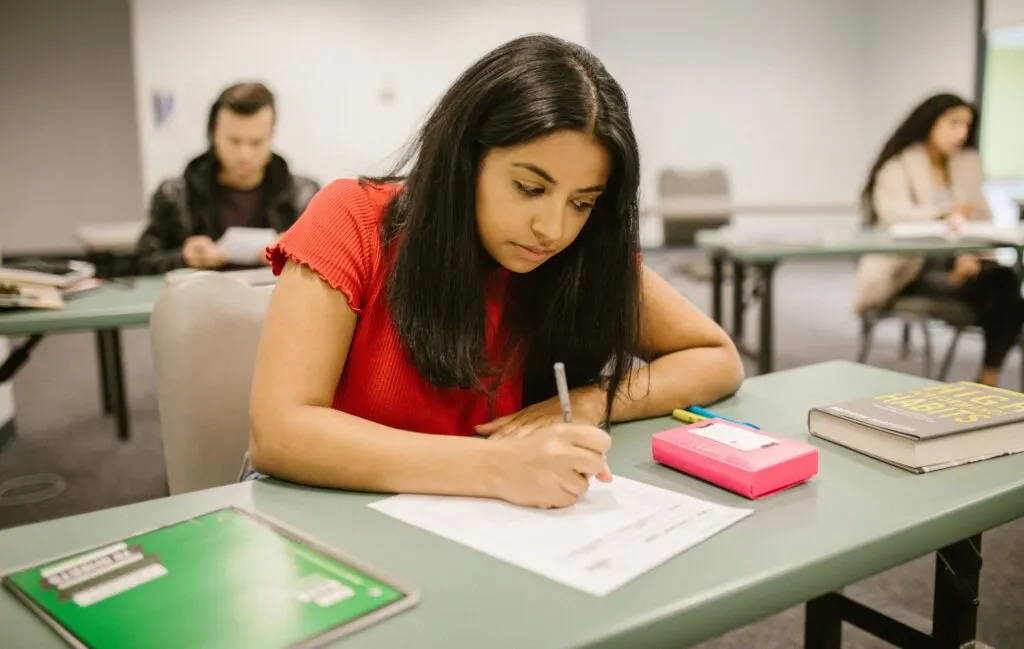Cheating in school is nothing new, but some students seem to go to extraordinary lengths to get away with it, only to make their attempts far more evident than they might have intended. Whether it’s outright plagiarism or having their mom do the assignment for them, there are some incredibly ridiculous ways students have tried to beat the system. Here’s a look at some of the dumbest and most laughable cheating attempts that have left teachers laughing and also a little insulted (because you really think I wouldn’t catch on to this?)
1. The “Reused Assignment” Strategy
One student thought they could get away with taking someone else’s completed assignment from the “turn-in” pile, erasing the name, and putting their own on top. This might sound like a decent plan, but it was a huge mistake, especially when the teacher could easily recognize the work and the previous owner’s handwriting.
Similarly, another student tried using an old student project, one that was kept as a “bad example,” and wrote their name on it before turning it in. This was not the best move, considering the teacher was quite familiar with the project, having taught it for many years.
2. Copying Famous Works of Art and Literature
In one case, a student tried to turn in an essay the teacher wrote as an example, claiming it was merely a coincidence that the essays were so similar. Another student once handed in the lyrics to Nirvana’s “Smells Like Teen Spirit” with a different title and claimed it was their own work of poetry. When caught, the student’s mother suggested that perhaps Kurt Cobain had stolen her son’s art. When the teacher explained that her son wasn’t even alive when Kurt Cobain wrote the lyrics, the mother broke down in tears and said, “This isn’t the first time he’s done this!”
Similarly, one student submitted Robert Frost’s iconic “Stopping by Woods on a Snowy Evening” as their own poem, and another turned in Shakespeare’s “Sonnet 18.” Both students defended their submissions, claiming the similarities were just coincidences. No amount of denial could convince the teacher otherwise.

3. Technology Failures and Obvious Hacks
Some students think that modern technology can help them cheat, but they often overlook the obvious risks. One student used their phone during a test to get answers. However, the entire class heard a text-to-speech function reading the questions out loud, making the “cheat” pretty hard to miss. Another student brought in a typed-up page for an essay portion of a test—on a test that didn’t even allow computers. This was a tiny detail they clearly did not consider.

4. Copying Without Care
Students who copy from one another often forget the simple step of checking the work before submitting it. One student copied a classmate’s homework so thoroughly that they also copied the classmate’s name, leaving the teacher baffled when both kids swore they had no idea how the mix-up happened.
In another case, a student copied and pasted from a webpage, leaving the URL at the bottom of the page. It didn’t take long for the teacher to notice. Even at the university level, students have been caught submitting someone else’s poorly edited work, like when a student pasted a paragraph from a classmate’s assignment and left all of the glaring grammatical mistakes uncorrected.

5. Not-So-Subtle Cheating Methods
Some students’ attempts at cheating were so blatant that they were almost laughable. One student wrote the answers on their forearms and wore short sleeves to the test. Another tried to get away with a full-on printout cheat sheet, but the student still got a low grade, proving that even with all the answers, they still didn’t know the material.
6. Copying Published Work
In one particularly shocking case, a student tried to pass off a Rolling Stone article as their research paper, starting with the line, “I sat down with Tupac Shakur at the ___ Hotel in New York City.” They asked if they had used an Ouija board to interview the late rapper.
And then there was the student who, in a French class, turned in an essay about Georgia—except it was about Georgia in Eastern Europe, not the state in the U.S. When confronted, the student continued to claim it was their own work, digging in their heels most absurdly.

7. Overconfidence in the Cheating Process
Perhaps the most curious case is the student who was absent the day of the test and had the answers memorized for the makeup. They thought they had it all figured out—not knowing the order of questions on the test was different. The student didn’t realize their mistake and ended up with a 0%, illustrating that even the most well-laid plans can go awry.
8. The “I Thought It Was a Good Idea” Category
In a particularly funny case, a student handed in a worksheet with a line at the end saying, “BTW, change your answer slightly because this is an opinion question.” Not exactly a subtle way of indicating cheating.
And, of course, there’s always the classic attempt where a student turns in a homework assignment, only for their friend to submit the same work with the top torn off and their name written on it. How much lazier does it get than that?
Conclusion
These stories highlight just how far some students will go in their attempts to cheat and just how hilariously bad their strategies can be. Whether it’s copying an essay from the internet, reusing old work, or relying too heavily on technology, students who think they’re outsmarting the system often end up outsmarting themselves. While the desire to take shortcuts may be tempting, these stories prove that the easiest way to get caught is often by making your cheating attempt too obvious to ignore.

